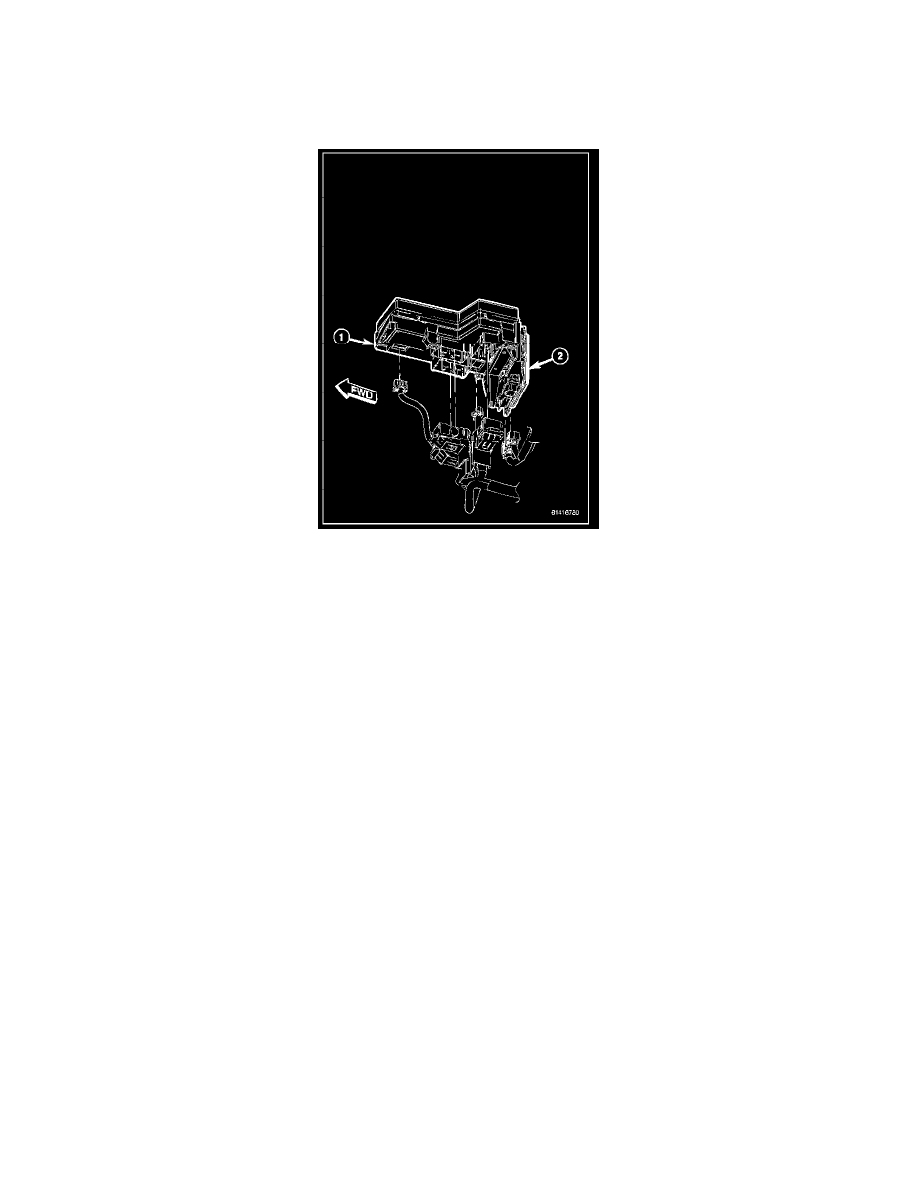Raider V6-3.7L SOHC (2006)

Control Module: Description and Operation
Transfer Case Control Module
MODULE - TRANSFER CASE CONTROL
DESCRIPTION
The Front Control Module (FCM) (2) contains the software to control the electric shift transfer cases in this vehicle. A separate Transfer Case Control
Module (TCCM) is not used. The FCM is a microprocessor-based assembly, controlling the 4X4 transfer case shift functions via the actuation of a shift
motor and utilizing the feedback of a mode sensor assembly. Communication is via the CAN bus. Inputs include user selectable 4X4 modes that include
2WD, AWD, 4LOCK, 4LO, and Neutral, depending on the transfer case.
OPERATION
The Front Control Module (FCM) utilizes the input from the transfer case mounted mode sensor, the instrument panel mounted selector switch, and the
following information from the vehicle's CAN bus to determine if a shift is allowed.
-
Engine RPM and Vehicle Speed
-
Diagnostic Requests
-
Manual Transmission Clutch Switch
-
Brake Applied
-
PRNDL
-
Ignition Status
-
ABS Messages
Once the FCM determines that a requested shift is allowed, it actuates the bi-directional shift motor as necessary to achieve the desired transfer case
operating mode. The FCM also monitors the mode sensor while controlling the shift motor to determine the status of the shift attempt. Several items can
cause the requested shift not to be completed. If the FCM has recognized a fault (DTC) of some variety, it will begin operation in one of four
Functionality Levels. These levels are:
-
Level Zero - Normal Operation.
-
Level One - Only Mode Shifts Are Allowed.
-
Level Two - Only Mode Shifts and Shifts Into LOW Are Allowed (No Neutral Shifts Are Allowed).
-
Level Three - No Shifts Are Allowed
The FCM can also be operating in one of three possible power modes. These power modes are:
-
Full Power Mode is the normal operational mode of the module. This mode is achieved by normal CAN bus traffic being present and the ignition
being in the RUN position.
-
Reduced Power Mode will be entered when the ignition has been powered off. In this state, the module will shut down power supplied to external
devices, and to electronic interface inputs and outputs. From this state the module can enter either Sleep Mode or Full Power Mode. To enter this
mode, the module must receive an ignition message denoting that the ignition is off, or not receive any messages for 5 ± 0.5 seconds. To exit this
mode, the module must receive one ignition message that denotes that the ignition is in the RUN position.
-
Sleep Mode will be entered, from the Reduced Power Mode, when no CAN traffic has been sensed for 20 ± 1 seconds. If during Sleep Mode the
module detects CAN bus traffic, it will revert to the Reduced Power mode while monitoring for ignition messages. It will remain in this state as
